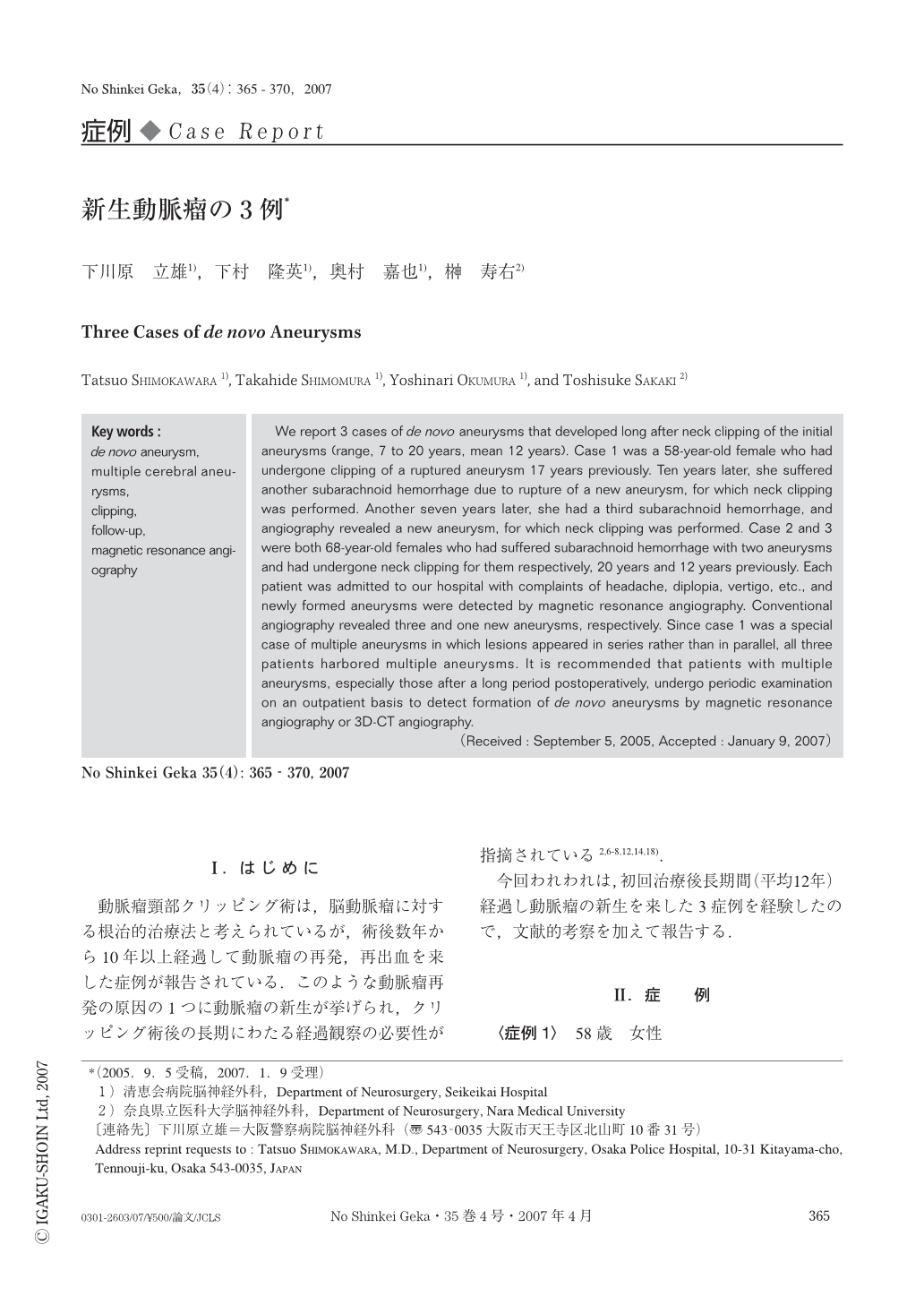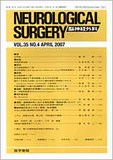Japanese
English
- 有料閲覧
- Abstract 文献概要
- 1ページ目 Look Inside
- 参考文献 Reference
Ⅰ.はじめに
動脈瘤頸部クリッピング術は,脳動脈瘤に対する根治的治療法と考えられているが,術後数年から10年以上経過して動脈瘤の再発,再出血を来した症例が報告されている.このような動脈瘤再発の原因の1つに動脈瘤の新生が挙げられ,クリッピング術後の長期にわたる経過観察の必要性が指摘されている2,6-8,12,14,18).
今回われわれは,初回治療後長期間(平均12年)経過し動脈瘤の新生を来した3症例を経験したので,文献的考察を加えて報告する.
We report 3 cases of de novo aneurysms that developed long after neck clipping of the initial aneurysms (range, 7 to 20 years, mean 12 years). Case 1 was a 58-year-old female who had undergone clipping of a ruptured aneurysm 17 years previously. Ten years later, she suffered another subarachnoid hemorrhage due to rupture of a new aneurysm, for which neck clipping was performed. Another seven years later, she had a third subarachnoid hemorrhage, and angiography revealed a new aneurysm, for which neck clipping was performed. Case 2 and 3 were both 68-year-old females who had suffered subarachnoid hemorrhage with two aneurysms and had undergone neck clipping for them respectively, 20 years and 12 years previously. Each patient was admitted to our hospital with complaints of headache, diplopia, vertigo, etc., and newly formed aneurysms were detected by magnetic resonance angiography. Conventional angiography revealed three and one new aneurysms, respectively. Since case 1 was a special case of multiple aneurysms in which lesions appeared in series rather than in parallel, all three patients harbored multiple aneurysms. It is recommended that patients with multiple aneurysms, especially those after a long period postoperatively, undergo periodic examination on an outpatient basis to detect formation of de novo aneurysms by magnetic resonance angiography or 3D-CT angiography.

Copyright © 2007, Igaku-Shoin Ltd. All rights reserved.


